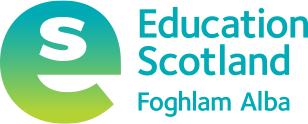Empowering Youth Voices resource pack
This resource pack is a set of sessions and activities for practitioners to work through with children and young people. It is designed to empower those involved in youth voice structures to consult their peers on any theme (topic, subject, idea, issue, concept etc).
The resource pack is designed to support practitioners create opportunities for a greater representation of children and young people to have their voices heard. It can be used in schools, youth groups and community settings, as well as across local authorities and third sector organisations. This resource can be used with existing and newly established youth voice structures including leadership groups, pupil councils, youth forums, champion boards, ambassador projects etc. We aim to continue developing this section over time. If you have suggestions for additional content or resources you'd find helpful or if you are willing to participate in a case study, please get in touch via email.
The resource pack is split into two parts which are available below:
Please keep us informed on your use of the resource pack and toolkit as you begin to implement it or when you complete it.
This resource uses peer-research as a method to develop children and young people’s skills, ability and confidence to consult their peers on any given theme.
The resource pack comes in two parts, downloadable from the links above. Part 2 can be repeated with the same group to undertake consultation on different themes.
The resource uses the principles of peer-research to support a more democratic and diverse process of consultation. Supporting the group to:
-
Understand the importance of youth voice and children's rights
-
Learn to work together as a group to represent their peers
-
Develop questions, undertake research and capture the views of their peers
-
Understand key elements of research such as consultation, data and analysis
-
Create an action plan following the results of the research
-
Present findings to leaders and decision makers
The resource is a complete programme but does not need to be used prescriptively, it relies on practitioners using professional judgement. It has been designed to be adaptable and therefore some slides may not be relevant or appropriate for certain groups.
When using the resource, practitioners will find facilitator guidance and activity notes in the notes section of every slide.
The resource focuses on the overarching parts of youth voice and children's rights, but groups can use this toolkit as a basis to undertake research on any given theme such as learning and teaching, attendance, outdoor learning, poverty, mental health and wellbeing etc.
In some instances, the topic may already be identified by practitioners or leaders, based on local knowledge and intelligence. This resource can be worked through with a specific theme set however additional information will be required to ensure that the children and young people are adequately informed on this theme and can genuinely participate in the research process.
Before using the resource, the principles identified through a Youth Voice charter should be agreed by the staff who plan to use it.
If a theme is already identified, it is advisable to add slides and information to this resource on the theme as appropriate. For example, if this resource is being used to carry out consultation around attendance, please give young people relevant attendance information for the local setting so that they are informed on the topic. It is vital that children and young people are presented this information in accessible language and formats so that it can be understood based on their age, stage, needs etc.
Once the resource has been worked through and the research completed, it is important that young people are offered opportunities to share their findings and find out what has happened with their results. Often consultation activities can feel tokenistic when the feedback loop is not closed at the end of the process, regardless of this feedback being positive or negative.
Within the resource pack children and young people are encouraged to identify themes in which they wish to consult their peers on but can also be presented a theme by practitioners. Making sure they understand a particular theme is key for youth voice to be effective and we recommend those using the pack refer to guidance on how to make a 'theme' understandable for children and young people within the support materials.
After the resource pack is concluded, your youth voice structure will have an youth voice action plan on the theme they have consulted on. This plan should be used to guide future activities that this group of children and young people take forward to achieve objectives as a result of the peer research process.
The children and young people involved are also able to consult on other themes by repeating Part 2 of the resource pack. The consultations should always result in evidence being collated and an action plan being created. Feedback on findings and how well this plan is being implemented should always be fed back to youth voice structures and the children and young people they represent.
Part 1 of the resources pack only needs to be delivered once to a youth voice structure unless the make up of this structure changes significantly.
The Empowering Youth Voices resource pack should be used with the local authority/organisation youth structure to create consultation questions based on the theme. These questions are then cascaded to setting specific youth voice structures/groups whose children and young people would subsequently consult their peers in their settings. Views would then be cascaded up for consolidation.
A digital solution is recommended for this process, such as an online consultation form.
Education Scotland and COSLA are currently working in partnership to develop a bespoke tool that can be used in the future.
